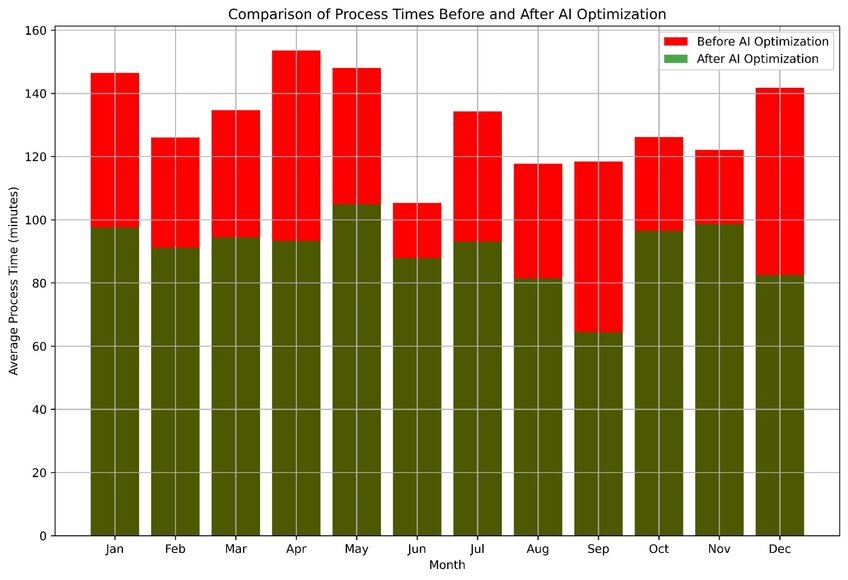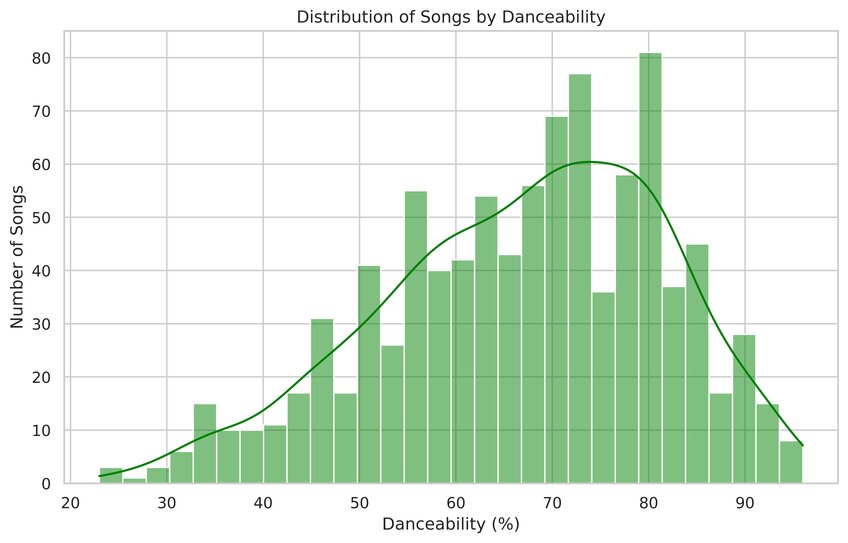March 1st, 2024
How You Can Use AI for Data Analysis
By Zach Fickenworth · 10 min read
With the world’s interconnectivity through the internet, the digital world of data is perhaps more important than the physical world. The availability of information and huge datasets have allowed companies to spearhead research, innovate on marketing efforts, and create lucrative products and services that set them apart from the competition.
However, since there’s so much data available to crawl through, traditional methods of analyzing them – which rely on extensive human input – can take too long to yield results. Businesses need to convert information into useful insights, and they need them in nearly real-time. That’s where combining AI capabilities with human ingenuity comes in.
What Is AI in Data Analysis & Why Is It Important?
Companies have never had easier access to vast datasets. However, while the ability to access and store data can be readily implemented with simple services, interpreting this information is no simple matter. AI in data analysis helps users crawl through their information and apply traditional data analytics methods on a larger scale – and quicker – to get tangible results.
Three important aspects of AI can be useful for analyzing data:
- Machine learning algorithms can determine and extract patterns from datasets and make predictions based on historical inputs.
- Deep learning can yield insights from unstructured data, particularly images, allowing for a second axis of data analysis.
- Natural language processing allows users to directly interact with the AI through natural language (rather than coding) and the AI to use unfiltered text data as input.
This means that you can let the AI sift through piles of data from pretty much whatever source you like, and the tool can structure it and perform rudimentary data analysis along the way to streamline the actual analysis process.
Where AIs shine is the speed and efficiency at which they can take in and process this data. These factors can remove bottlenecks common for traditional data analysis processes, where humans need to spend hours collecting, collating, and structuring information for future use.
Additionally, AIs are built to find and expose patterns. For example, ChatGPT uses a vast library of text to interpret user questions and predict what the next word would be based on the input and its context. Then, it repeats the process iteratively, expounding on the previous result.
Similar concepts apply to using AI in data analytics. This familiarity with patterns allows an AI tool to more readily recognize or alert for possible patterns or relationships between seemingly independent datasets, some of which humans might initially dismiss or overlook.

Example chart depicting the impact of AI on optimizing operational processes, with AI optimization saving, on time, 33 minutes. Created with Julius AI
Benefits of AI in Data Analysis
There are several major aspects where AI could trump traditional data analysis techniques.
Speed
As mentioned, a computer can process inputs and deliver outputs at a much faster rate than a human could ever hope to achieve. As a result, an AI-powered analysis tool can create nearly real-time responses and insights. In the modern world where trends change quickly and companies need to respond so quickly it borders on precognition, speed is key.
Validation
The AI’s ability to analyze information and look for patterns also makes it excellent at finding data points that don’t fit. This data could stem from input errors, loss of structure, or simply statistical errors that prove the point.
Either way, an AI chatbot can provide answers on why a data point might not be in line with expectations. Perhaps more importantly, generative AI can look through its vast databases to check how to fix the inconsistency.
Automation
Data entry is perhaps the most tedious and time-consuming task in the data analysis process. Without it, the entire concept falls apart, but collecting and structuring that information can take significantly more time than the analysis itself. An AI tool can readily create expansive datasets from unstructured data, generating meaningful relationships and connections between data points that allow data scientists to do their magic.
This frees up time for key personnel to focus on interpreting the useful information created from the analysis and creating recommendations for the company’s movements going forward.
Scalability
With machine and deep learning algorithms, AI can learn based on the inputs you provide. Thus, if you start with a small dataset and get useful results, you can reinforce them and allow the AI to get better at handling larger information loads.
Personalized Insights
AI analytics can take a deep dive into customer relationships and management, crawling through unfiltered data gained from user interactions (such as reviews or social media posts). This allows a company to create a more personalized campaign and approach to retain and grow its user base.
How to Easily Use AI in Your Data Analysis
Let’s see how you can use an AI tool like Julius AI to transform your datasets into tangible information.

Example graph generated using AI depicting the distribution of selected Spotify songs by danceability. Created with Julius AI
Data Input
The AI tool’s chat system allows you to upload a wide variety of databases across formats, including CSVs, Excel, and Google Sheets. Then, the chat system’s natural language processing allows the AI to interpret queries provided in English, searching for the deeper context in the question to answer it more succinctly.
Data Cleaning and Processing
The AI then inputs the provided information into the database and provides a pre-analysis report, validating the dataset for any errors and outliers so they can be remedied before the actual transformation. It allows you to spot missing values or provide additional data points if they seem relevant to the query.
Pattern Matching and Visualization
The AI can then extract initial patterns and provide the distribution of variables in the dataset, also allowing you to visualize the information if it doesn’t need further processing.
Performing Analysis
The tool can provide descriptions of possible interpretation methods to guide you through the analysis process. It recognizes what type of information you’re trying to extract and can propose the most common ways to analyze the data to get there.
Interpretation and Reporting
Apart from delivering information, AI can help you visualize that data through tables, charts, and graphs, giving you immediate insight into key data points.
Finally, the AI can generate a report that summarizes how it reached its conclusions and what key steps were taken during the analysis.
AI & Data Analysis Trends: Why AI Is Here to Stay
One of the most common concerns many people have about this type of AI is that it threatens people’s jobs. However, this isn’t necessarily true.
While AI is powerful and fast, its capabilities are still not at the level of human analysts, especially trained and seasoned data scientists who help build AIs in the first place. At their core, AI tools should be considered helpful tools that streamline and partially automate the data analysis process.
This is supported by the fact that current generations of generative AI are still prone to hallucinations – creating “facts” out of thin air – and errors in manipulating or interpreting data.
Despite that, the field of AI is rapidly advancing, and new tools allow users to collaborate and automate simple tasks to focus on the big picture. That’s the ideal use case of current AI, and how companies and individuals can use it to reduce costs and improve productivity.
Take Your Data Analysis to the Next Level with Julius AI
With AI sitting on the precipice between human input and full automation, companies would do well to leverage these tools to their fullest to get an advantage against competitors. That means using AI to offload data collection and analytics and focus on extracting useful information to guide future decisions.
If you want to step into the future of AI-powered analytics, look no further than Julius AI. It will allow you to naturally expand your company’s data collection efforts through natural language processing, descriptive and predictive analyses, and lightning-fast data visualization techniques.
Get started with Julius AI today and learn how you can save time by getting more out of your data. For more tips, see an in-depth tool review of Julius AI by the Effortless Academic.
Frequently Asked Questions (FAQs)
How is AI used in data analysis?
AI is used in data analysis to process large datasets quickly, identify patterns, and generate insights that would be time-consuming for humans to uncover. It employs techniques like machine learning, deep learning, and natural language processing to automate tasks such as data cleaning, pattern recognition, and predictive modeling, making the analysis process faster and more efficient.
What are the pros and cons of AI in data analysis?
AI excels in speed, scalability, and efficiency, handling massive datasets and providing near-instant insights while automating tedious tasks like data entry. However, it can struggle with nuanced interpretation, is prone to errors like “hallucinations,” and lacks the contextual understanding and creativity that human analysts bring to complex problems.
Can AI replace a data analyst?
AI can enhance and streamline a data analyst’s workflow but cannot fully replace them. While it automates repetitive tasks and speeds up analysis, human analysts are essential for interpreting results, providing context, and crafting strategies based on the data, especially in complex or ambiguous situations. AI and human expertise work best as a collaborative team.
